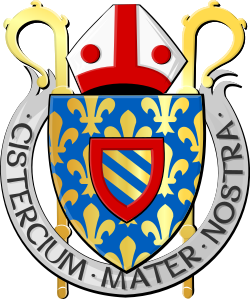(Sacer) Ordo Cisterciensis | |
 Coat of arms of the Cistercians |
This is a List of Cistercian monasteries (called abbeys) in Ireland. The first abbey built in Ireland was Mellifont Abbey, founded by Saint Malachy, Archbishop of Armagh in 1142.
(Sacer) Ordo Cisterciensis | |
 Coat of arms of the Cistercians |
This is a List of Cistercian monasteries (called abbeys) in Ireland. The first abbey built in Ireland was Mellifont Abbey, founded by Saint Malachy, Archbishop of Armagh in 1142.
Given in brackets are the date of foundation and the motherhouse which established the Abbey.
†Note: The Savigniac order was founded in 1105 but by 1147 due to financial issues all Savigniac Abbeys were absorbed into the Cistercian order [44]
{{cite book}}: CS1 maint: location missing publisher (link)